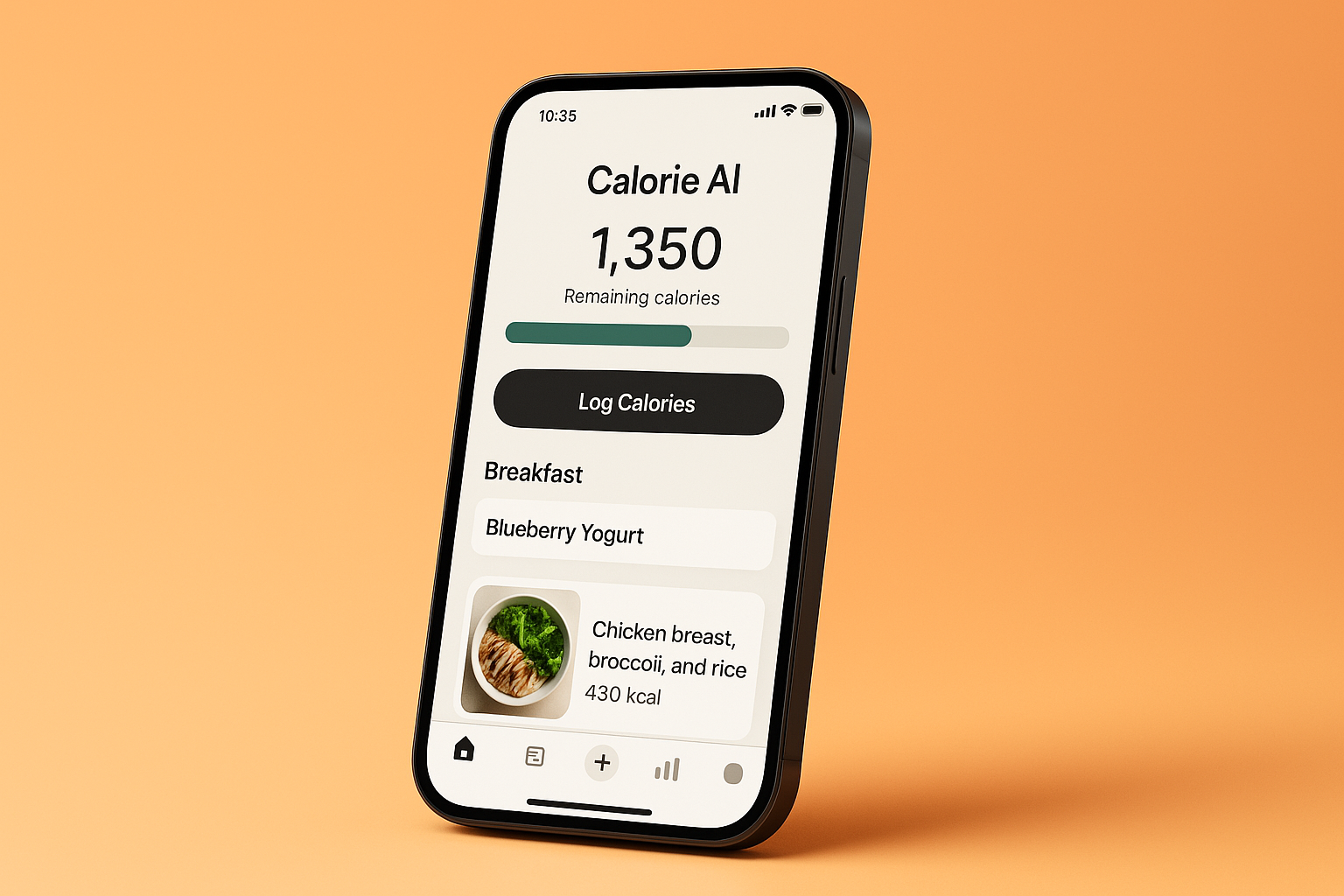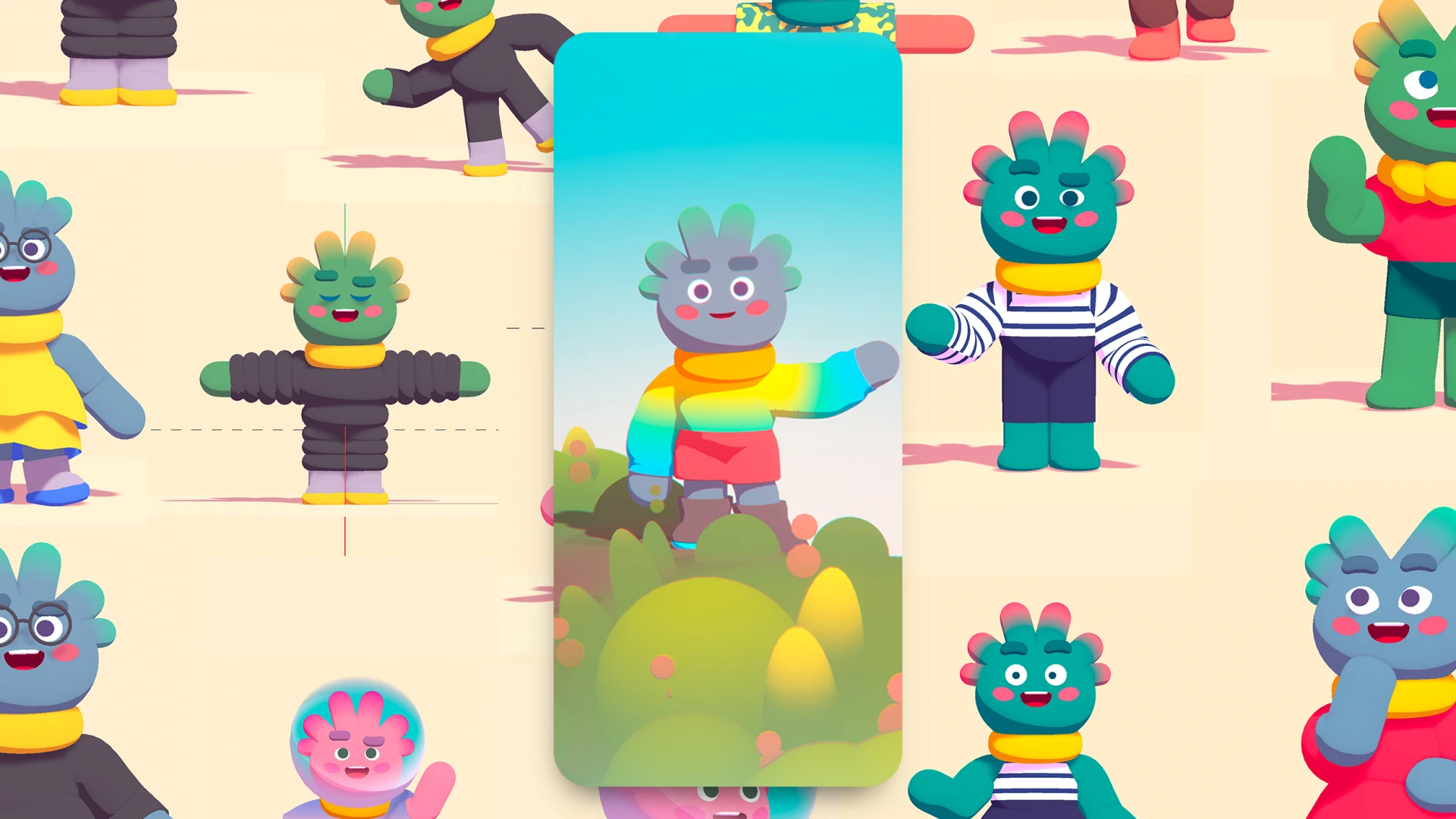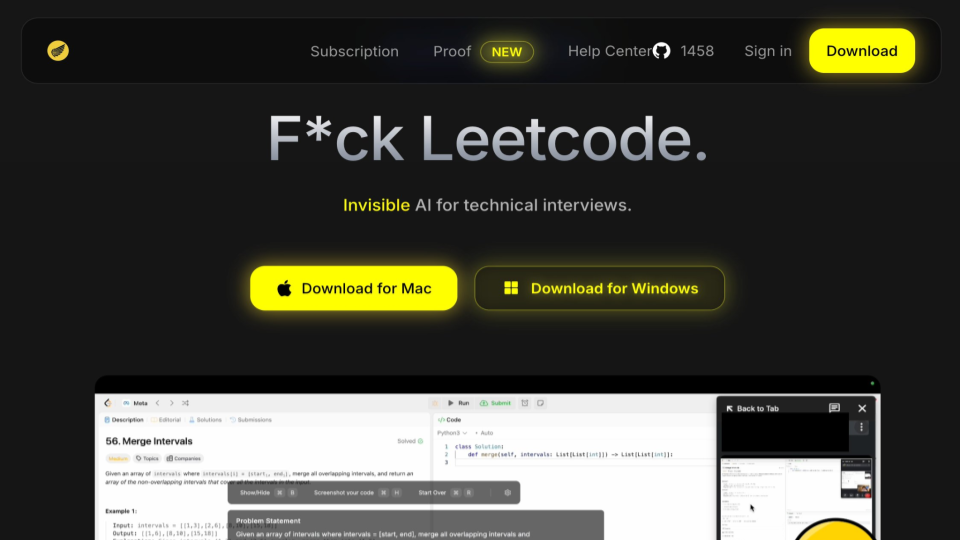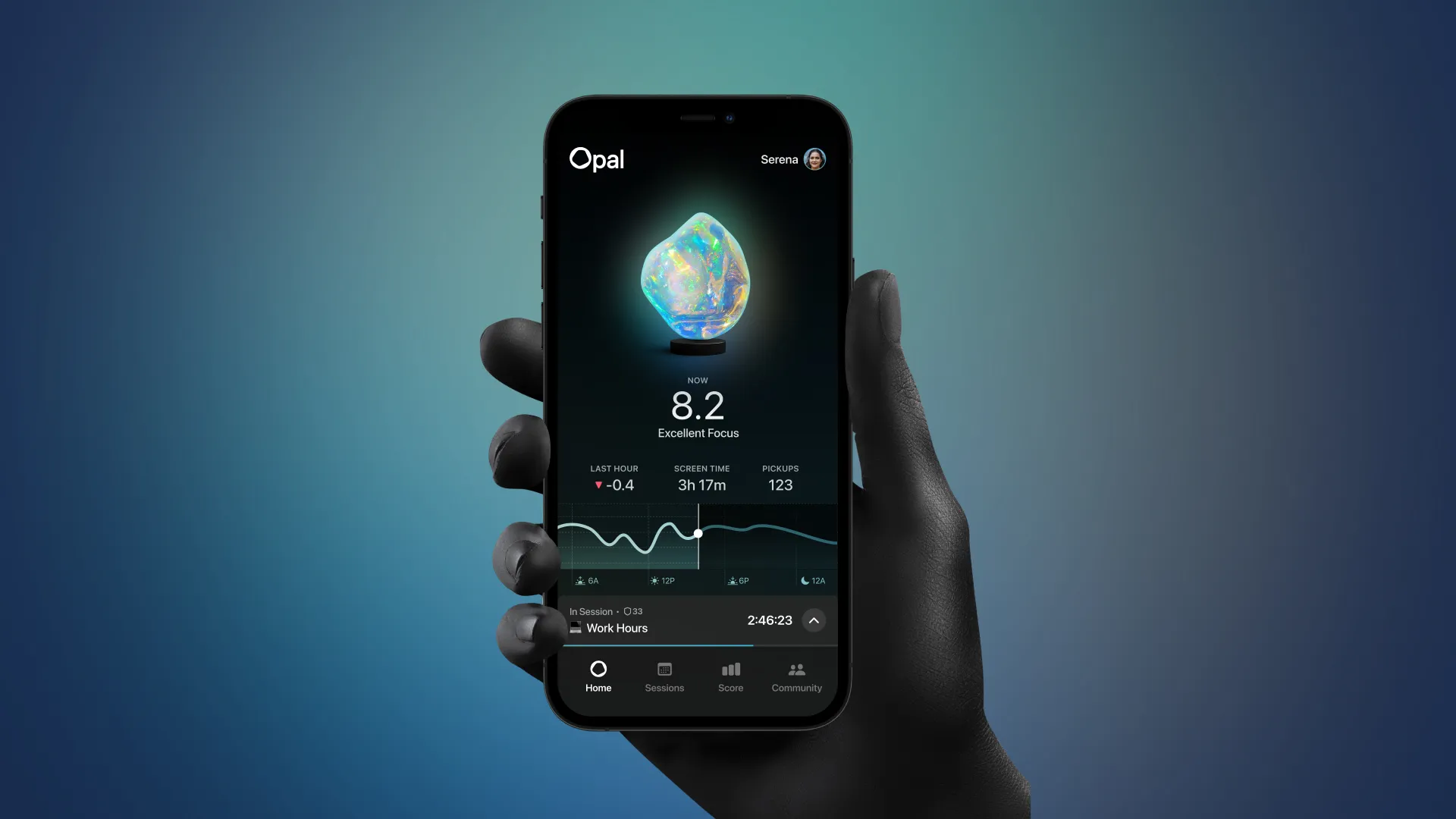Case Study: Cal AI – Fueling $1M MRR with Shortform Video & E-Commerce Tactics
How a teen-founded AI calorie tracking app reached $1M in monthly recurring revenue and over 1 million downloads in just six months through viral shortform videos and e-commerce growth strategies.

Introduction
Cal AI is an AI-powered calorie tracking app that lets users log meals by snapping a photo instead of typing entries. In just six months post-launch (May 2024), the teen-founded startup rocketed to over $1M in Monthly Recurring Revenue (MRR) and more than 1 million downloads (How a 17-Year-Old Scaled Cal AI to $1M MRR | Micro Empires). This explosive growth was no accident – it came from savvy shortform video marketing that made Cal AI go viral, coupled with clever e-commerce style growth tactics that turned views into subscriptions. The result: Cal AI quickly challenged legacy calorie trackers like MyFitnessPal and Noom, despite those incumbents' years in the market (Meet The 17-Year-Old CEO Behind A $12M AI-Powered Nutrition App – RamaOnHealthcare).
Shortform Video Strategies Driving Virality
Cal AI's growth was fueled by TikTok and Instagram Reels, where short, punchy videos about nutrition took off. The team deliberately crafted content that would grab attention in seconds and spread organically. They focused on relatable, trend-savvy videos showcasing the app's one-snap tracking in action (How Two Teens Built Cal AI to $8M ARR in Months - Starter Story). Rather than spend big on traditional ads, Cal AI partnered with a swarm of micro-influencers to populate social feeds with engaging clips of the app in use (How Two Teens Built Cal AI to $8M ARR in Months - Starter Story) (How Two Teens Built Cal AI to $8M ARR in Months - Starter Story). Key video formats and themes included:
-
Calorie Breakdown Clips: Many posts tapped into viewer curiosity by visualizing calorie counts in surprising ways. For example, videos comparing "What 100 calories looks like" in different foods became popular scroll-stoppers (one such TikTok showing 100 calories of cooked vs. uncooked pasta garnered massive engagement (Cal Ai's Marketing Strategies: Lessons From A $400k Mrr Success Story)). These quick breakdowns provided a hook – a shocking or educational calorie fact – that prompted shares and comments.
-
Creator Challenges & Skits: Cal AI encouraged creators to incorporate the app into viral challenges and everyday scenarios. Some made humorous skits about staying on track with diet goals – "Don't you ever let me catch you cheating on your diet!" one viral TikTok quips, before showing Cal AI as the solution to log that "cheat" meal (Cal Ai's Marketing Strategies: Lessons From A $400k Mrr Success Story). By leveraging trending audios and memes (hashtags like #fyp, #weightloss, #diet were common (Cal Ai's Marketing Strategies: Lessons From A $400k Mrr Success Story)), these videos felt native to TikTok's culture while subtly promoting Cal AI. The result was millions of views and a flood of curious users.
-
Fitness Influencer "What I Eat in a Day": Cal AI rode the "daily eats" trend, teaming up with fitness influencers who shared their daily meal plans and calorie totals using the app. Influencers would film a day's worth of meals – breakfast to dinner – and use Cal AI to scan each dish, showing followers the calorie/protein counts. This not only satisfied the "what does a fit person really eat?" curiosity, but also organically demonstrated the app's ease. For instance, one influencer reel highlighted her 13 kg weight loss and touted Cal AI as "so easy and accurate" for tracking meals (13KGS down and here is what I eat in a day (same thing ... - Instagram). Such personal-story videos had strong viral appeal (blending inspiration with a tech demo) and often ended with a call-to-action for viewers to try Cal AI themselves.
Importantly, Cal AI's own social accounts acted as amplifiers. The team would repost the best user-generated videos on the official @getcalai channels, turning one creator's content into broader social proof (How This 17-Year-Old Quietly Built a $1.12M/Month AI App | by Jano le Roux | The Startup | Medium). This repost strategy meant a single viral clip on TikTok could be echoed to Instagram and other platforms, maximizing reach without the team having to produce all content in-house. By leaning into shortform video – with catchy hooks, visual calorie demos, and authentic creator voices – Cal AI achieved the kind of cultural virality typically seen with viral dances or memes, but for a utility app. This relentless social buzz translated directly into tens of thousands of app installs at low cost, proving the adage that "TikTok's algorithm can propel a product to a massive audience quickly" when the content resonates (How Two Teens Built Cal AI to $8M ARR in Months - Starter Story).
Brand Positioning: Clarity, Creator-First Design & Viral Appeal
From the start, Cal AI positioned itself as a fresh, Gen-Z-friendly alternative to legacy diet apps. The brand's differentiation came through in three ways: clarity in experience, a creator-first ethos, and an overall viral-friendly vibe.
-
Simplicity & Clarity: Cal AI's product and messaging emphasized frictionless simplicity – "track your calories with just a picture" (Cal AI | Download Today). This clarity was a stark contrast to older apps like MyFitnessPal, which many users find cumbersome with manual logging and cluttered interfaces (How Two Teens Built Cal AI to $8M ARR in Months - Starter Story). By eliminating tedious food searches and data entry, Cal AI made nutrition tracking feel instant and approachable. The app delivered a "wow" moment on first use – snap a meal photo and get instant calorie feedback – which gave users a clear, tangible benefit within seconds. Unlike Noom or LoseIt that bury users in setup quizzes or text-heavy coaching, Cal AI kept the focus on one clear value: quick, AI-driven calorie estimates. This straightforward approach not only improved usability but also became a selling point in content (viewers would see how easy it looked). In essence, Cal AI's brand promised clarity over complexity, attracting an audience that was turned off by the bloat of legacy diet trackers.
-
Creator-First Branding: Cal AI's growth strategy doubled as its brand identity – it became "the calorie app all your favorite fitness creators use." Instead of glossy corporate ads, Cal AI's public face was real people on social media. The company actively collaborated with niche fitness influencers, from bodybuilders to lifestyle vloggers, making them an integral part of the brand. This creator-first design philosophy meant Cal AI often let influencers shape the messaging (each with their own style) while providing them the tools to do so (like referral links, guidance on the app's features, etc.). The result was a brand that felt community-driven and authentic. Cal AI even highlights influencers on its website ("Used by these amazing people") to reinforce that community vibe (Cal AI | Download Today). By prioritizing micro-influencers and their audiences, Cal AI tapped into trust and relatability that big competitors lacked – a personal touch that made the app feel "of the people, by the people." As one analysis noted, smaller niche creators with authentic followings can deliver massive ROI in modern marketing (How a 17-Year-Old Scaled Cal AI to $1M MRR | Micro Empires). Cal AI exemplified this shift by building its user base through countless creator endorsements rather than traditional ads. This not only differentiated its marketing, but also fed back into product design (ensuring features were shareable and easy for creators to showcase).
-
Viral & Youthful Appeal: Everything about Cal AI's approach was engineered for virality and appeal to a younger demographic. The founders recognized that a cool, novel user experience would market itself. Indeed, the app's one-snap magic trick had inherent viral appeal – users would show friends out of excitement ("it's such a simple, magical moment that users naturally want to tell others" (How This 17-Year-Old Quietly Built a $1.12M/Month AI App | by Jano le Roux | The Startup | Medium)). Cal AI's brand voice on social media was upbeat, meme-aware, and motivational, distancing it from the sterile, data-centric image of older calorie counters. Instead of framing itself purely as a "diet tool," Cal AI came off as a trendy fitness hack – something fun to try and share. This positioning was further solidified by savvy comparisons to legacy apps in its content (for example, TikToks explicitly showing Cal AI vs. MyFitnessPal differences in speed and ease (How Two Teens Built Cal AI to $8M ARR in Months - Starter Story)). By highlighting what legacy apps lacked and presenting Cal AI as the exciting new solution, the brand captured pent-up demand for innovation in the space. In short, Cal AI differentiated itself by being clearer, more creator-powered, and far more viral than the incumbents – turning what could have been a utility app into a social media phenomenon.
E-Commerce Growth Tactics in a Fitness App
Beyond viral videos, Cal AI translated attention into revenue by borrowing proven tactics from the world of e-commerce and direct-to-consumer brands. The team applied growth hacks that an online retailer might use, adapting them to app marketing to drive urgency and trust:
-
Urgency-Focused Calls to Action: Cal AI's marketing didn't just rely on passive interest – it actively pushed viewers to "download now" and start their journey immediately. Many of their shortform videos and ads included urgency-laden CTAs, a technique common in e-commerce to spur quick action. For instance, during peak seasons (like New Year's resolutions), Cal AI content would use phrasing like "Don't wait – start tracking today!" or limited-time offers (e.g. a free trial or discount counting down). This fear of missing out (FOMO) approach is reminiscent of online stores urging shoppers to buy before a sale ends. By instilling a sense of "start now, don't miss your goals" urgency, Cal AI converted impulsive social media interest into app installs. The strategy recognized that virality alone isn't enough – you need to nudge the audience to take the next step with strong CTAs (Cal AI's sign-up rates benefited from these prompt nudges, much like an e-commerce site boosts conversions with time-sensitive deals).
-
Creator Collaborations & Referral Codes: Taking a page from affiliate marketing, Cal AI turned its army of creators into a distributed salesforce. The company provided influencers with personalized referral codes or links that gave their followers a discount (and often earned the creator a commission or bonus per signup). This tactic, common in subscription boxes or DTC products, was gold for Cal AI's growth. It gave influencers extra incentive to promote enthusiastically, effectively making them brand ambassadors with a stake in Cal AI's success. As a growth marketing report noted, Cal AI's referral code system "turns influencers into true brand advocates" (Cal Ai's Marketing Strategies: Lessons From A $400k Mrr Success Story) – the creators weren't just paid once for a post; they had ongoing motivation to drive signups. For example, fitness coach Jayde Peets shared her weight-loss journey on Instagram and encouraged viewers to try Cal AI with her code "JAYDE" for a discount (13KGS down and here is what I eat in a day (same thing ... - Instagram). By partnering so closely with creators, Cal AI leveraged word-of-mouth at scale: each creator's endorsement came with a friendly promo offer, making the audience more likely to convert (just as they might with a favorite YouTuber's promo code for a product). This blend of social influence and affiliate marketing is a hallmark of modern e-commerce growth, and it powered Cal AI's user acquisition flywheel.
-
Social Proof Loops: Cal AI consciously cultivated social proof and used it to create a growth loop. In the app stores, the product amassed thousands of positive reviews (e.g. a 4.8★ rating on iOS with 66k reviews) which signaled to potential users that this app actually worked and was loved by many (Photo calorie app Cal AI, downloaded over a million times, was built by two teenagers | TechCrunch). On social media, every time a user posted a success story or a "day in the life" using Cal AI, the team amplified it – either by reposting or by citing those stories in ads. This abundance of testimonials and real-user results created a validation loop: new users would see evidence of others' success (on TikTok, Instagram, or even in news articles about Cal AI) and feel more confident downloading. Then they might share their own experience, feeding the cycle. Cal AI also isn't shy about broadcasting its rapid growth itself – mentioning milestones like "#1 trending in Health" or millions of downloads – to reinforce that everyone is jumping on this. Such tactics mirror the social proof strategies of e-commerce (think product pages showing photos of customers or reviews). In Cal AI's case, the combination of user-generated content and impressive metrics served as continuous social proof. One media piece observed that 30%+ customer retention and viral word-of-mouth have been key to Cal AI's expansion (Photo calorie app Cal AI, downloaded over a million times, was built by two teenagers | TechCrunch). By turning customer success into marketing content, Cal AI built a self-sustaining loop where social proof drives more adoption, which in turn creates more social proof.
In summary, Cal AI's founders applied growth principles from outside the traditional app playbook. Urgency-driven messaging prompted quick conversions, a creator affiliate network scaled promotion authentically, and social proof was leveraged at every turn to build trust. These e-commerce growth hacks, paired with the viral content engine, helped Cal AI not only attract millions of users but also convert them into paying subscribers, pushing revenue over the $1M MRR mark remarkably fast.
Conclusion
Cal AI's story is a masterclass in modern growth: a clear, viral product + shortform video virality + growth-hack tactics = breakout success. By differentiating itself from legacy calorie counters with an AI-driven, camera-first experience, Cal AI had a compelling product worth talking about. By flooding TikTok and Reels with creative, shareable nutrition videos, it captured the zeitgeist of fitness social media and went viral. And by closing the loop with savvy marketing tactics (the kind perfected in online retail), it turned all that attention into actual revenue and loyal users.
In an industry long dominated by a few big players, Cal AI carved out a space by being culturally in-tune and growth-obsessed. It shows that even a tiny startup can dethrone incumbents if it masters the new playbook – one where content creators are the new power channel, and where blending virality with conversion optimization can yield extraordinary results. Cal AI's rise to $1M+ MRR stands as a case study in how clarity, creativity, and cross-disciplinary growth tactics can transform a simple app into a movement. (How Two Teens Built Cal AI to $8M ARR in Months - Starter Story) (How This 17-Year-Old Quietly Built a $1.12M/Month AI App | by Jano le Roux | The Startup | Medium)

About Sam Bennett
Our marketing team specializes in analyzing successful growth strategies across technology and consumer products.


